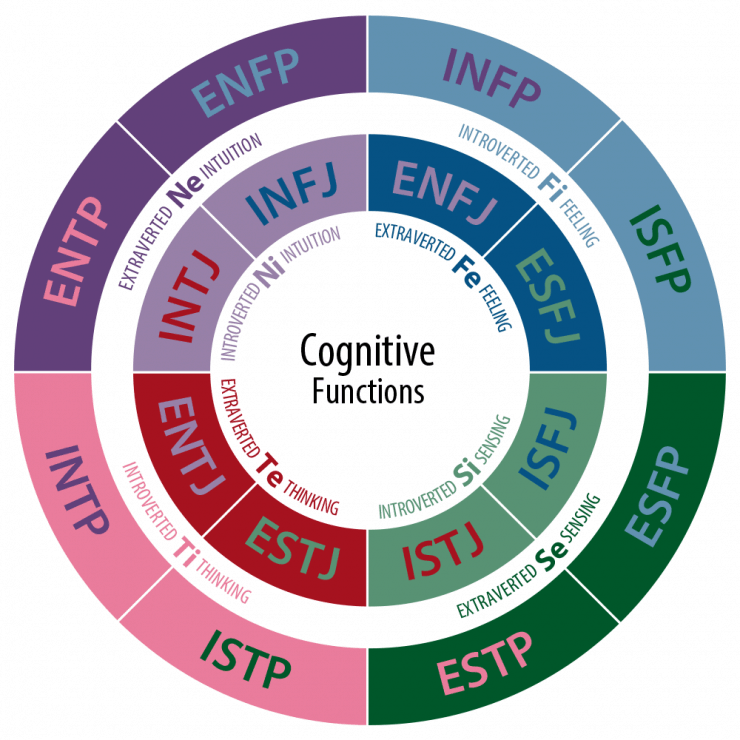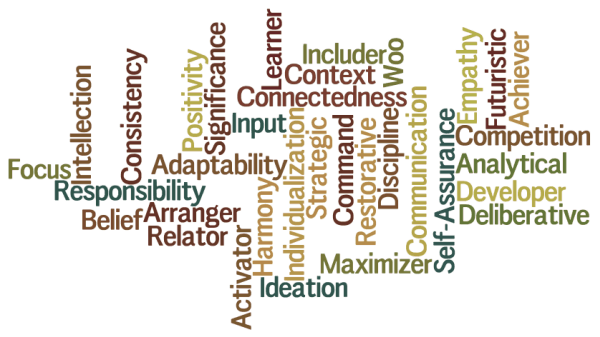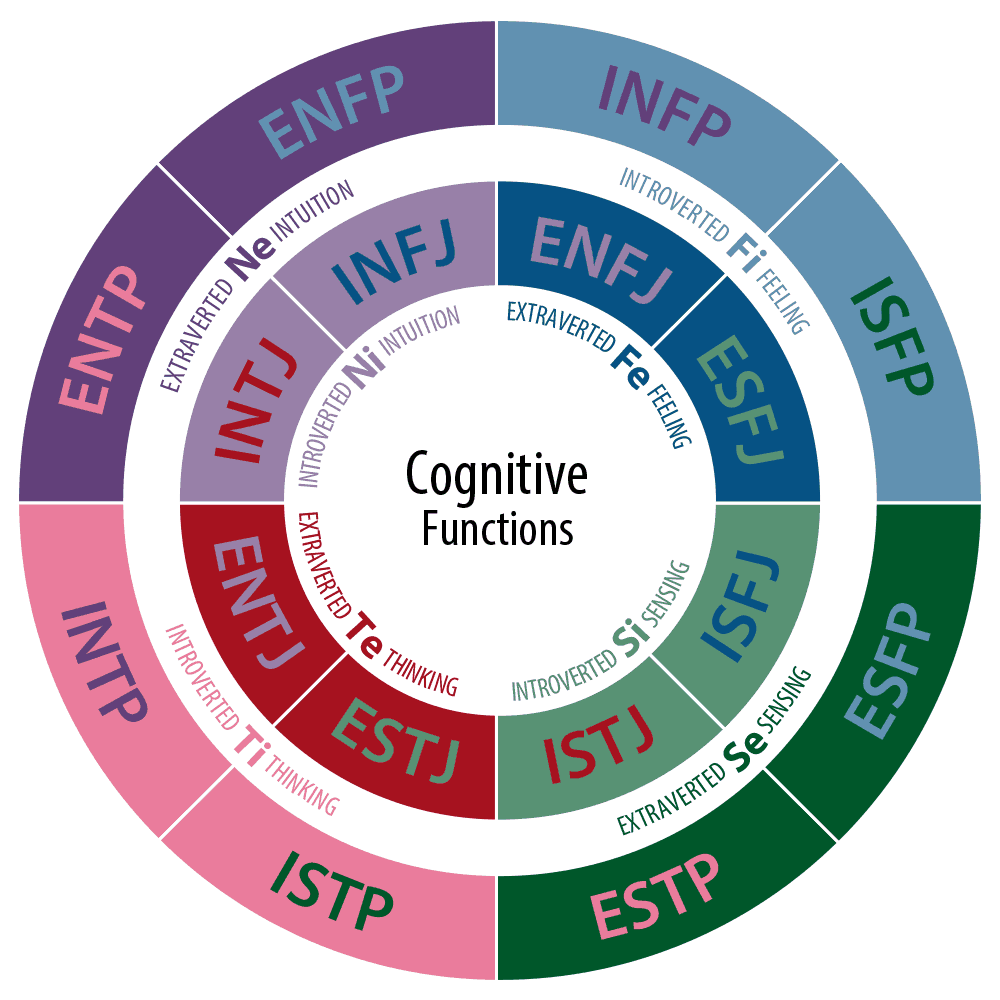
Amongst the many different inventory tools available in the market, some of the most popular ones are currently the Clifton StrengthsFinder, Myers-Briggs Type Indicator (MBTI), and the DISC Profiling Tool.
Since the descriptions of these tools are readily available, I shall not attempt to exercise my excellent “copy-and-paste” skills.
Here are the descriptions of the 3 tools I mentioned:
I’m going to be more focused in this post, and look purely at the CSF and the MBTI. I’m declaring that I’m not yet trained in MBTI, but I’m a Gallup Certified Strengths Coach. So while I do my best to be objective, there may be some bias in my assessment.
Levels of Distinction
Most people are familiar that MBTI has 16 personality types, based on the 4 pairs of opposing descriptors. Namely:
- Introvert / Extrovert
- Sensing / Intuition
- Thinking / Feeling
- Judging / Perceiving
That’s what the majority of people are familiar with – MBTI Step I. There is a MBTI Step II report that provides an addition 5 facet for each pair, giving as a total of 20 additional facets to look at if you would like to dive into the report. Here is what an example of the MBTI Step 2 Interpretive Report looks like.
 The Clifton StrengthsFinder (CSF), on the other hand, as a list of 34 Talent Themes. Each Theme describing a group of Talents (defined as a natural recurring way of thinking, feeling or behaving that can be applied to a particular task). Instead of having a spectrum of pairs, the CSF simply ranks all 34 themes of an individual.
The Clifton StrengthsFinder (CSF), on the other hand, as a list of 34 Talent Themes. Each Theme describing a group of Talents (defined as a natural recurring way of thinking, feeling or behaving that can be applied to a particular task). Instead of having a spectrum of pairs, the CSF simply ranks all 34 themes of an individual.Gallup provides two level of reports – Top 5 Strengths, and the CliftonStrengths34 Report.
Even with just information on the Top 5, the level of information is phenomenal. Because each theme does not stand alone and is affected by all the other themes, we have to look at a person’s report holistically. The probability of someone having the same Top 5 Themes in the same order is 1 in 33 million. If we were to give it some slack and ignore the order, the probability of finding two people with the same top 5 theme is 1 in 278 thousand. If we were to expand our horizons and look at the top 10 themes, the permutations would be astronomical!
Small sidetrack: When you receive your StrengthsFinder Report, you will receive one that’s called the “Strengths Insight” report. It is a personalised report, where the description of each talent theme is customised according to your top 5. This means that even if you and your friend has the same theme, you will find that the descriptions are somewhat different for each person (how cool is that?!).
Conclusion:
Clifton StrengthsFinder is able to provide much finer
levels of distinction for an individual compared to the MBTI tool.
Ease of Identification (without a formal assessment)
Due to the structure (4 distinct pairs) of the MBTI (Step I), it is much easier to identify the personality type of an individual simply by asking a series of questions. Naturally this approach does not give you the intensity levels of each personality trait that a report might provide, but it provide a very quick and dirty assessment for anyone you meet. After that it is a simple matter of googling the personality type (if you don’t already have the information on hand), and you get a nice chuck of information to work on.
For StrengthsFinder, we can often hear the dominant themes playing out in an individual, but based on experience, there are many times that I’m surprised by the actual reports. Due to the dynamic nature of themes, a combination of a number of themes may give the appearance of another, when it really isn’t. So making an intelligent guess, or using the 5 clues to talent may help give an idea. But taking the assessment is really the best way to identify a person’s theme sequence.
Unlike the MBTI where you could probably get the outcome by asking questions, it is harder to do so with StrengthsFinder. But that doesn’t mean that a knowledge of StrengthsFinder is useless without the formal assessment. Being able to identify the talent themes of a person conversationally still does wonders even though you don’t have their reports, or know exactly where that talent theme is within the theme sequence of a person.
Conclusion:
Identifying someone’s MBTI Personality type (Step I)
is easier than identify a person’s Top 5 in the StrengthsFinder Tool.
Ease of Remembering
Whether it is your own MBTI Personality type or your Top 5 Strengths for StrengthsFinder, it doesn’t really make a difference. For one you have to remember 4 traits (some would say 4 letters, but if you don’t remember what the letter means then it doesn’t matter!), and for the other you need to remember 5 strengths (in order). Both would require some effort, and relatively easy to commit to memory. So for personal development, both are equal.
The difference comes when you wish to use it in an inter-personal situation, where you would need to understand the other person’s profile as well.
For the MBTI, it is relatively easy to remember the 4 pairs of traits, and therefore fairly easy to understand what it means when you meet someone of a different type. It is fairly easy for an Introvert to understand the other person is an extrovert and vice versa. Of course, this only applies to MBTI Step I. If we were to examine all 20 facets under MBTI Step II, I think take considerably more effort.
For StrengthsFinder, it would take a longer time (comparatively) to remember what the 34 themes represent. If you would like to understand the nuances of each theme, that would take quite some study in itself. But because it is so detailed, once you understand each of the themes and learn to see it in others, it becomes an extremely powerful tool. But I get ahead of myself…. we are talking about the ease of remembering here.
Conclusion:
It is easier to remember the MBTI System (Step 1)
than all the StrengthsFinder Themes and their meanings.
Consistency & Universality
Both the MBTI and StrengthsFinder are context independent, and do not change much over time. MBTI Practitioners will say that it is not supposed to change at all, but experience tells me that it does. You are free to defer from my opinion of course.
Unlike the DISC Profile, a behavioural profile, of which context is important; Both MBTI and StrengthsFinder are more personality profiles and cuts across all context. Unless there are major events in a person’s life (like the sudden death of a significant other), the profiles are unlikely to have any major changes.
I can’t speak for MBTI, but for StrengthsFinder, there is a small caveat – a person’s profile stabilises after a person is about 18 years of age. Someone who is younger would likely still be developing at a cognitive level.
Conclusion:
Both MBTI and StrengthsFinder are similar in this aspect.
Usefulness
The usefulness of the tools would be a very subjective topic, and I would say, the usefulness depends on the objective. After all, a popular saying goes “If all you have is a hammer, every problem looks like a nail.” It is important to have a selection of tools at your disposal – from a coach’s perspective anyway.
I would say that at the time of writing this, MBTI is more widely known, and perhaps more easily marketed and implemented for corporate team building because of it’s popularity. I’ve covered above that it is probably easier to remember the MBTI compared to the StrengthsFinder, so that makes it a very good candidate for a quick and easy team building workshop.
That’s not to say that StrengthsFinder is inferior in comparison, but I personally feel that StrengthsFinder has much greater depth and applicability. We can definitely do a 4-hour Strengths Discovery Workshop for corporates which will give great insight into the individuals, but the tool can go so much deeper. To limit the StrengthsFinder to a workshop, would be like limiting a Lamborghini to a road with a speed limit of 40km/h.
I’ve found that StrengthsFinder is developed for application and performance enhancement. When I know that a person has a strong theme, say Analytical, I know how to help the person develop it into a strength in the task they are accomplishing, or I know what task this person would naturally excel in. But if I know that a person is an introvert, it’s a much bigger leap to translate that into practical application.
To maximise the use of StrengthsFinder, I would encourage people to be part of a community (join our meetup group if you are in Singapore), or to engage a Strengths Coach (schedule a free 30min intro session here) to maximise your strengths.
Conclusion:
For quick-and-dirty type of objective, MBTI would be more useful. For someone who is
interested in greater depth and applicability leading to better performance,
I would recommend StrengthsFinder.
Cost
There are several free online MBTI assessments around that would provide you with your basic Step 1 types. If all you are interested in is your type without consideration for the level of intensity of each trait, the free online assessments would do just fine. A simple google search would surface several options for you.
But if you are interested in the formal MBTI report (Step I only), it would cost you about US$50 without consultation. Most of the time, the MBTI assessment needs to be administered by a trained practitioner and the cost of the assessment would include a consultation session with the practitioner. I don’t have sight over how much the Step II
The StrengthsFinder assessment (online) would cost you about SG$30 for the Top 5 Strengths, and SG$75 for the CliftonStrengths34 report. If you are interested in the StrengthsFinder book, you can get it fairly cheaply from bookdepository.com which provides free shipping.
* Please note that I am not affiliated to the sites which I have provided links to, and do not benefit in anyway should you choose to purchase the reports for your reference.
Conclusion:
The StrengthsFinder Assessment (Top 5) is cheaper compared to MBTI (Step I).
If you have taken your StrengthsFinder Assessment and are wondering how to take things further, Strengths Coaching may be just what you are looking for! Schedule a free 30min introductory session to find out more now to find out how coaching can help you better understand yourself and help you achieve your goals more easily.
References and Readings:
1. Using the MBTI with Gallups StrengthsFinder [Source: CPP, Inc]
2. Can my talents change? [Source: Gallup, Inc]




